A New Scoreboard at Supply Field and More from Village Hall
- Details
- Written by: Vivan Zweig
- Hits: 2275
 Exciting news for athletes of all ages in Scarsdale. At the June 27 meeting of the Village Board, the Village accepted gifts from Maroon and White and Travel Softball of $31,933 for a new electronic scoreboard and safety netting at Supply Field.
Exciting news for athletes of all ages in Scarsdale. At the June 27 meeting of the Village Board, the Village accepted gifts from Maroon and White and Travel Softball of $31,933 for a new electronic scoreboard and safety netting at Supply Field.
A memo from the Recreation Department says, “The proposed gift of a scoreboard and safety netting at Supply Field #2 will enhance the softball experience for not only players, but also spectators. The installation of safety netting along the driveway will provide a safer experience for spectators, as well as reduce potential damage from foul balls to vehicles parked in the adjacent parking lot. Finally, the safety netting will provide an opportunity for the parking lot be fully utilized during games without spectator fear of their vehicles being damaged.”
Amy Frank, President of Maroon and White who donated $23,393 for the scoreboard said, “We are excited to present a gift to the Village of a scoreboard to help to give Supply Field a facelift. The girls’ Varsity Softball team and travel softball will use it.
Michelle Sterling, who was instrumental in securing the funding thanked the Board and Maroon and White for “this amazing gift.” She said, “For 18 years we have not seen any improvements in Supply Field. This is awesome and an amazing start. A lot of money has gone into improvements at Dean Field, where the Boys’ Varsity Baseball Team plays, but there has been nothing at Supply Field. We appreciate this moment where we can think about what we can do to help girls’ sports. We appreciate the village looking at the fields and prioritizing Supply Field – and we appreciate the support of Travel Softball.”
Mayor Arest assured her that improvements at Supply Field would be prioritized and it would be ready for the April season.
Ella Hayes and Sammy Fenigstein co-captains of the softball team also thanked Board, saying, “It means a lot to us.” They asked the Board to, “get our infields and outfields ready for this season. They are hard and rocky.”
Joe Guarino, a passionate softball dad and an active member of Scarsdale’s travel softball programs, said “It's with Scarsdale Travel Softball that I've learned about some of the complex dynamics that exist between the village and the district in managing field usage. And some of the inequity that exists between softball and baseball in Scarsdale.” Field. Guarino called for the trustees and village leadership to bring long term change to Supply Field and create a more equitable experience for female softball athletes in Scarsdale.
Also on the agenda were public safety, a public hearing on proposed amendments to the Scarsdale Village Noise Ordinance and more.
Events
The Village of Scarsdale’s Annual Fireworks Spectacular will be hosted on Thursday, June 29 at the Scarsdale Pool at 9:15 PM. In addition to the fireworks, the Westchester Band will perform on the lawn at 7:30 PM. A $5.00 fee will be charged to all non-pool members entering the pool starting at 5:00 PM and beginning at 8:00 PM, all individuals entering the Pool Complex will be charged.
The Scarsdale Farmer’s Market is open every Sunday in the Scarsdale Village from 9:00 AM to 1:00 PM. Members of the community are encouraged to visit the market to help support local farms and expand the selection of products offered.
Public Safety
SVAC: Following Mayor Arest’s opening comments, David Raizen, the President of the Scarsdale Volunteer Ambulance Corps (SVAC), was invited to speak. During the COVID-19 pandemic, SVAC filed with the New York State Department of Health for community paramedicine authorization, becoming one of only three such programs in Westchester County. Community paramedicine is an emerging model of healthcare that allowed paramedics and emergency medical technicians to offer preventative services that improve access to care and reduce hospital readmittance. Raizen was proud to announce the approval of legislation that would allow community paramedicine to continue in Scarsdale. He emphasized Congressmember Amy Paulin’s critical role in the legislation’s approval, stating that she “…spearheaded, pushed, and represented us incredibly well.”
Cooperation with the School Board- Deputy Mayor Whitestone discussed cooperation between the Village Board and the School Board including “a better two-way information flow and institutionalized cooperation in place.” Through regular, continued meetings with the school district, Scarsdale’s public safety officials have provided the Village Board with a more robust understanding of the school district’s budgeting and other support needs.
Emergency Notifications -Mayor Arest announced that the Village has conducted extensive research into the town’s current communication tools. The exercise led to the execution of an agreement by the Village Manager and Everbridge, a communications organization. Everbridge’s Nixle application will be used by the Village to relay public safety information and other important announcements. Arest stated “It is imperative that residents sign up for the Everbridge system….” Every Scarsdale resident will receive a postcard that notifies residents of the new system and provides the link to register.
Lithium-Ion Batteries
In light of recent reports in the regional and national media of fires attributed to defective lithium-ion batteries, Village Manager Robert Cole relayed a few reminders from Scarsdale’s chief medic.
1. Purchase and use devices that are listed by a qualified testing laboratory.
2. Always follow the manufacturer's instructions.
3. Only use the battery that is designed for that specific device.
4. Pit batteries in the device right away upon purchase.
5. Only use the charge cord that came with device, not a second market charge cord.
6. Only charge a battery in a flat, dry area away from children, direct sunlight, liquids, and tripping hazards.
7. Do not continue to charge a battery after it is fully charged.
8. Keep batteries at room temperature when possible.
9. Store batteries away from anything that can catch fire.
Residents interested in recycling their lithium-ion batteries can do so by appointment at the Household Material Recovery Facility in Valhalla.
QR Codes for Village Bills
Village Treasurer Ann Scaglione is implementing QR codes for resident’s water and tax bills to enhance participation in online bill payment. Click here (https://www.wired.com/story/how-to-scan-a-qr-code/) to learn how to scan a QR code.
Public Hearing on Amendments to Noise Code
The Scarsdale Village Board of Trustees has been working to update the Noise Code and hosted a public hearing on the proposed changes. Scarsdale’s golf courses, particularly the Fenway Golf Club, came under fire. Resident Carol Silverman lives in vicinity of the Fenway Golf Club and stated that every weekend the club hosts parties that can be heard well past 10:00 PM, when they’re supposed to be shut down. Silverman asserted that the proposed code must address the club’s disturbance to the community. Resident Jordan Black shared similar concerns, pointing out that golf courses are exempt from all “normal hours” of restriction. Black described the course’s lawncare equipment as “jet engines” going off at 5:15 AM and that the issue has become so bad that he knows of residents considering moving away.
Resident Bob Harrison has been a 42-year resident of Scarsdale and has enjoyed the peace and tranquility of the town throughout his residence. Harrison pointed out that home sports courts are not explicitly regulated by the proposed noise code. According to Harrison, there’s no reason for a resident to have a loud, disturbing lacrosse sports court in the backyard.
Mayor Arest assured the speakers that the proposed noise code strives to incorporate both qualitative and quantitative standards. Arest stated that the Village Board is working to address the concerns raised during the hearing and that they will be considered during the revision process.
Agenda Items
The Village Board closed the evening by:
- Adopting a proposed local law concerning wireless telecommunications facilities.
- Accepting Marron and White’s gift of a scoreboard and safety netting for Supply Field.
- Announcing the appointment of Anne Moretti to the Council on People with Disabilities.
- Authorizing the execution of a memorandum of agreement with Scarsdale Union Free School District and Scarsdale-Edgemont Family Counseling Services for the 2023-24 Youth Services Project.
Trustees Discuss Pickleball Proposal and Noise Ordinance Draft
- Details
- Written by: Joanne Wallenstein
- Hits: 3292
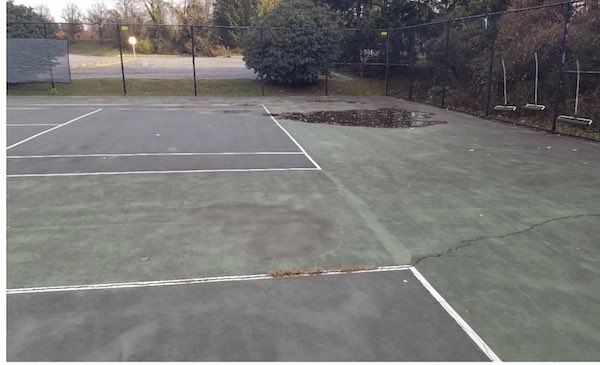 The Recreation Department is proposing to convert the all-weather tennis courts at Crossway to pickleball courts on a trial basis.How loud is too loud? That was the subject of a discussion at a work session of the Scarsdale Village Board on June 13 when they held a third meeting to review changes to Scarsdale’s noise ordinance. In response to complaints about loud parties, radios, barking dogs, noisy air conditioners, construction, lawn mowers, yelling and more, the Village Attorney has drafted a proposed ordinance to define what’s not allowed and when.
The Recreation Department is proposing to convert the all-weather tennis courts at Crossway to pickleball courts on a trial basis.How loud is too loud? That was the subject of a discussion at a work session of the Scarsdale Village Board on June 13 when they held a third meeting to review changes to Scarsdale’s noise ordinance. In response to complaints about loud parties, radios, barking dogs, noisy air conditioners, construction, lawn mowers, yelling and more, the Village Attorney has drafted a proposed ordinance to define what’s not allowed and when.
It also sets fines for violating these new standards at $250 for the first violation, $500 for the second within a year of the first, and no less than $1,000 for a third or fourth offense within the year of the other violations.
You can review the draft here:
The proposed law gives specific definitions to guide enforcement officers in determining what is indeed a violation. For instance, here’s how it defines violations for noise disturbances created by dogs:
(1) Vocalizing (howling, yelping, barking, squawking, etc.) for five (5) minutes without interruption, defined as an average of four or more vocalizations per minute in that period; or,
(2) Vocalizing for ten (10) minutes intermittently, defined as an average of two vocalizations or more per minute in that period.
It also proposed decibels limits for day and night-time hours which were defined as “The hours between 7:00 p.m. and 8:00 a.m. Sunday through Thursday, and the hours between 8:00 p.m. and 10:00 a.m. on weekends and legal holidays.
For planned events, the law stipulated application procedures to get a noise permit. It says, “A noise permit shall be required to operate, play or permit the operation or playing of any amplified sound on any commercial or residential property above the decibel levels set forth in Table 1. This section shall apply to any commercial establishment, including but not limited to bars, golf courses, membership clubs, restaurants or performance venues, and any person seeking to hold a public or private celebration.
At the meeting on June 13, 2023 discussion centered on the decibel requirements and whether or not they were reasonable. Trustee Jeremy Gans said, “This would bar anything above 55 decibels starting on a Friday night. Neighbors enjoying their yards, pools or a cookout would then be in violation of the law. I think that 50 decibels is too low and too early.”
Others agreed, saying, “We’re concerned about unintended consequences of decibel limits. ...Should we consider removing the decibel levels from the proposed law? We would like to gather some data.”
Trustee Whitestone said, “I think the three main benefits of this proposed code is it provides firmer footing and rationale, it is less subjective and there are fewer gray areas and it is good to have the definition of the terms. I am impatient to get it in place, but if we do think we need to study the decibel levels maybe we should do so before passing this.”
Mayor Arest said, “The Board wants to proceed with a modified version without decibels and without the permitting requirements. And during enforcement we can gather data about noise levels and make additional modifications.”
During public comments, Jon Schwarz said, “There is an inconsistency involving weekend parties. The law prohibits loud speakers outside – but allows you to get a permit to install the loud speakers outside. I am not in favor of the blanket permits.”
At the conclusion of the meeting Trustees agreed to remove the decibel requirements and place the proposed ordinance on the agenda of the next meeting for a public hearing. They agreed they would collect data for the next few months on decibel levels and then revisit whether or not the code needs further amendment.
Pickleball
The conversation then turned to the construction of pickleball courts. At the end of the budget negotiations in the spring of 2022, Scarsdale pickleball enthusiasts were happy to learn that the village had allocated $410,000 for the construction of eight pickleball courts at Crossway. However, now more than a year later, there are no courts in sight. What happened?
At the June 13, 2023 work session we learned that the estimate to build those courts had come in too high. At $600,000 the cost was 50% more than the budgeted amount so the Recreation Department was looking for other solutions.
They came up with the idea of converting the three all weather tennis courts at Crossway into six pickleball courts on a trial basis before deciding next steps. These courts are currently in disrepair and need work to address large cracks and depressions as well as resurfacing.
Now the Village is proposing to install acoustifence panels to block the sound, put down termporary pickleball lines and purchase nets and supplies for a trial.
This solution would address the call for pickleball courts – but might also run afoul of the tennis community who will have fewer courts available. The memo from the Recreation Department says that they were not able to gather and analyze data about individual tennis court usage at Crossway but estimated that if these courts were converted to pickleball, 36 hours of tennis playing time would be lost and would need to be absorbed by other courts in the Village.
After much discussion, the trustees asked the recreation department to set up a pilot program by using tape rather than painting lines to convert the courts from tennis to pickleball. They asked for the department to set a determined time period for the pilot program, after which it could be evaluated.
They did not give a timeframe for the opening of the new pickleball courts.
A few residents who live near Crossway objected vociferously to the plan as they feared that the sound of the pickleball would disturb them.
Alan Garfunkel of Lincoln Road submitted a consultant’s report about the noise from pickleball to the trustees. He said, that the that the acoustic fence (which is designed to reduce the noise) will make the sound worse. He said, “Someone should speak to the noise expert.” He added, “Tennis is very popular. There were 1500 permits sold – and it is played from morning until night.”
His wife Lori Garfunkel was more emotional. She said, “This affects us dramatically. Even with a 12 foot fence I will not be able to have my windows open, be on my deck or be in my backyard. This should not be near homes. You are talking about noise and quality of life – at the same time you are telling the neighbors that we don’t count. The noise would be over the noise statute. You are taking my house away from me. It is really upsetting.”
Former Village Trustee Carl Finger of Butler Road said, “I am hearing many comments about different recreational needs. I would like to suggest that you do a deeper analysis to determine recreational needs. How would the pool renovation affect this? Do a comprehensive study and look at this more holistically.”
Kaare Weber of 51 Crossway said, “I want to thank the board for considering other options. The approved site is over budget. I hope it is not just money you are considering. I don’t know why our neighborhood association had to invest in the report. There are lawsuits across the country about this.”
Bob Harrison asked, “Why don’t we use the paddleball courts at Brite Avenue instead? That has not been a source of revenue. Why don’t’ the pickleball proponents raise the funds to build the courts?”
Cliff Seltzer of 73 Carthage Road said, “I am in favor on pickleball The acoustifence keeps the sounds in – the fences work well. There are new paddles out there that dampen the noise and it’s getting better. There is a park called Chillmark in Briarcliff where I play – the courts are packed 24 hours a day.” About the lines he said, “The tape can come up – and you can put the pickleball nets on wheels. In other communities there are homes even nearer by.”
Paul Friedman at 11 Deerfield Lane said, “I am out of bounds of the noise. An incomplete fence will funnel the noise into the open side of the court. I see dozens of lawsuits about this – it causes stress and anxiety. I would like us to think long and hard about this trial period.”
Village Board Reviews Priorities: The Human Report and the ChatGPT Version
- Details
- Written by: Vivian Zweig and Joanne Wallenstein
- Hits: 1908
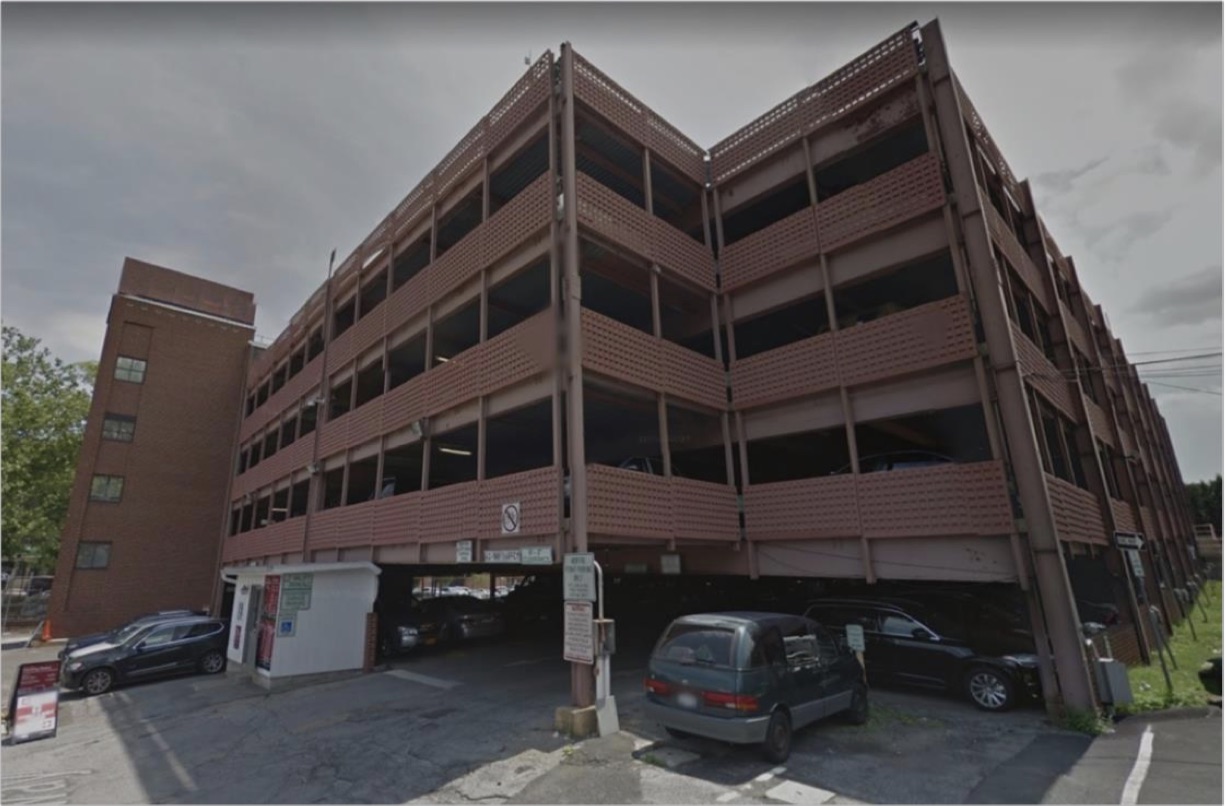 What are the priorities for Mayor Justin Arest and the newly election Scarsdale Board of Trustees? On Tuesday, May 31 the board held a work session to discuss what they hope to tackle during the current term. It turns out they have a lot on their plate. The meeting extended for three hours.
What are the priorities for Mayor Justin Arest and the newly election Scarsdale Board of Trustees? On Tuesday, May 31 the board held a work session to discuss what they hope to tackle during the current term. It turns out they have a lot on their plate. The meeting extended for three hours.
Among the topics discussed were:
- Public Safety.
- Noise Ordinance.
- Technology & Cyber Security.
- Public Works & Infrastructure.
- Public Pool Renovations.
- Parks, Recreation, and Conservation.
- Government & Administration.
- Finance & Budget.
- Village Center Project.
As an experiment, we tried recording the meeting on Otter.ai and submitting the text to ChatGPT to write an article. See our article first – and CHAT’s version of the first 45 minutes of the meeting at the bottom. Let us know what you think in the comments section below.
Here’s our version covering some of what was discussed over the three hours:
Public Safety
The new Board spent a considerable amount of time discussing Public Safety, specifically the organization of active shooter drills over summer break and the development of a communication decision tree for emergency situations. Over the summer, the Scarsdale Police, Fire Department, and Volunteer Ambulance Corps will be participating in active shooter drills at Scarsdale schools. Additionally, the Board recognized the necessity of creating clear and well-established avenues of communication in case of emergency events.
Village Manager Robert Cole has been tasked with establishing these routes of communication and will be collaborating with the Scarsdale School District to share this information at a later date. Finally, the Board discussed sending quarterly communications to the community containing relevant information about recommended safety precautions. These quarterly updates would ensure that each Scarsdale resident is aware of any current or changing safety precautions. Further discussion on
Noise Ordinance
The Board continued deliberations on the proposed Noise Ordinance, which would place new restrictions on unwanted or unnatural noise in Scarsdale. A works session to discuss further changes to the proposed law will be held on June 13th, and the Board hopes this meeting will allow them to schedule a public hearing. Additionally, the Board acknowledged the importance of meeting with Village Attorney Nicholas Ward-Willis, to get an expert opinion on the law.
Public Works and Infrastructure
The Board has identified a list of capital projects, which will improve stormwater protection. The comprehensive list of projects will be listed and discussed in greater detail to determine potential benefits and impacts. Through these discussions, the Board hopes to create a prioritized list of the planned capital projects. Additionally, the Board discussed what additional regulations they might implement to make an additional impact on stormwater, such as subdivision regulations. Mayor Arest acknowledged that regulating private properties raises questions concerning potential impacts on the property owners. Finally, the Board also planned to improve the Fire Code at a later date.
Scarsdale Pool Complex Renovations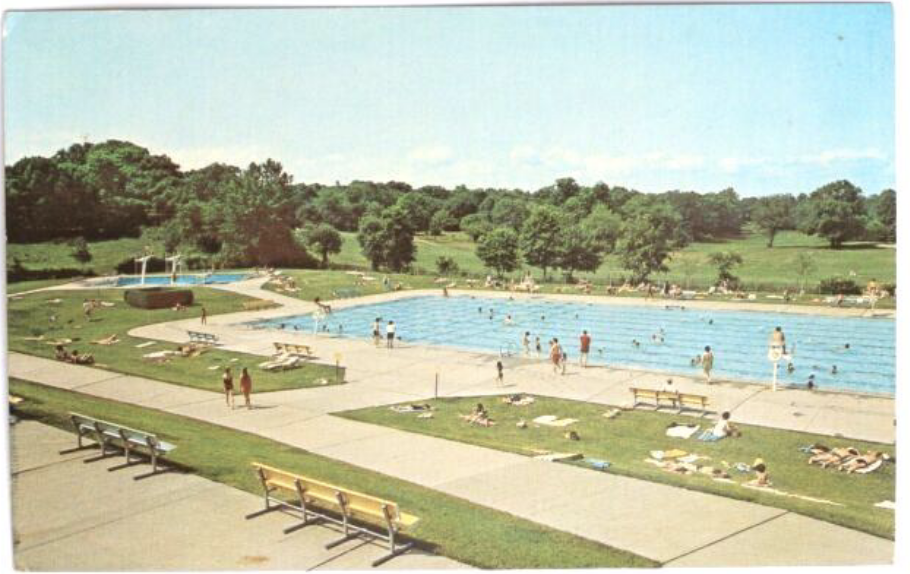
While discussing the proposed pool renovations, the newly elected trustees decided that more research and information gathering is necessary. The Board felt that despite the research done last year, there was not yet enough information to determine what renovations the community want and would be willing to pay for. Additional research to guide the project will conclude in June and will enable the Board to make a more informed decision on the proposed renovations. One priority was timing to hopefully avoid the closing of the pool during the summer months.
Building Code
Another item on the Board’s agenda was land use. Last year the Board voted to revise some of the Village’s building code to adjust requirements for Floor Area Ratio (FAR) and side yard setbacks in hope of reducing home bulk. Trustees are now asking whether or not these revisions were successful in achieving the desired result? Village Manager Rob Cole suggested asking the Village Planner to analyze the data from last year and the prior year to see what could be deduced.
Field Improvements
Another item that is top of mind for the baseball teams is the condition of the Village’s seven baseball and softball fields. According to a memo from Brian Gray, Superintendent of the Parks and Recreation Department, the fields need work.
His memo says, “Through years of continuously adding clay and drying agent to maximize field usage, our infield elevations are substantially higher than the grass outfields. Additionally, a lip has formed along the arch between the clay infield and grass outfield, creating a fishbowl effect not suitable for sheeting of water into the outfields during rain events. Furthermore, the subsurface has been compacted to a point that impedes drainage.
He recently submitted a memo to Village Manager Rob Cole analyzing the cost to repair Crossway Fields 1, 2 and 3. Merrone Sports Fields submitted an estimate of $140,000 for the labor, new clay and new sod.
However, the 2023-24 Village and School budgets include funding for a formal field study, of all fields, including Village and School fields. A professional firm will be retained to provide a “good, better and best solution to field renovations, as well as a study of allocation and prioritization of fields based on user participation numbers from all user groups within Scarsdale on both Village and School District fields.”
Therefore, the question for this Village Board is whether or not they should proceed with the work on the fields at Crossway, while this larger study is being planned and done. Or whether they should wait for the outcome of that study to proceed.
Freightway
Yet another infrastructure challenge is the Village-owned Freightway Garage. In 2020, the Village Board, under the direction of Scarsdale Mayor Marc Samwick, entertained proposals to develop the site into a mixed use development with residential units, parking, retailing and public amenities. However after considerable pushback from residents who feared a surge in the school enrollment, plans were scrapped. Now, though safe, the garage remains an expensive property to maintain. As Rob Cole explained, “the structure has passed it’s useful life,” and requires annual repairs for the structure, paint, elevator, decking, drainage and more.
Discussing the project, Mayor Arest mentioned that the 2020 plans did not go through, partially because there was little cooperation between the school district and the village board on estimating potential increases in school enrollment and planning where these students would go to school. Undoubtedly an unpopular subject, the Village Board will need to decide whether or not to reopen the discussion. In her original state budget proposal, Governor Kathy Hochul called for more housing along transit lines, and a transit-oriented development along Scarsdale Avenue may be timely.
As an experiment, we tried recording the first portion of this three hour meeting and asking ChatGPT to synthesize the material and produce an article. Let us know what you think! We value your comments!
Here is what emerged:
ChatGPT AI Article
Title: Strengthening Community Initiatives: A Comprehensive Approach for Future Enhancements
Introduction:
Community leaders in Scarsdale recently held a meeting to address public safety concerns and discuss strategies for improvement. This article combines the key points from the meeting with another update on future enhancements in the community. The shared goal is to enhance coordination, communication, and collaboration, while ensuring that new initiatives align with community values and priorities.
Collaborative Efforts and Priorities:
The meeting highlighted shared priorities in public safety, including emergency communication, coordination, noise ordinance, public safety fleet EV transition, cybersecurity, and fire department volunteerism awareness. Recognizing the importance of collaboration, community leaders stressed the need to work with stakeholders such as the school district to effectively address these priorities.
Coordination, Training, and Communication Strategies:
Efforts to ensure school safety have been ongoing, with the Scarsdale Police Department actively participating in training, drills, and collaborations with the school district. Communication strategies were also discussed, focusing on the development of a decision tree communication process and leveraging specialized vendors for text messaging, geofencing, and emergency notifications. Timely and accurate information dissemination during critical situations is crucial for enhancing public safety.
Quarterly Updates and Engaging the Community:
To maintain transparency and accountability, it was proposed to provide quarterly updates on public safety collaboration efforts to the board. These updates would cover discussions, decisions, joint exercises, and future plans made in various collaborative settings. Additionally, engaging the community through routine public safety updates, balanced with relevant and fresh information, would help residents take necessary precautions.
Expanding Reach and Building Resilience:
The community recognized the challenge of reaching all residents and identified board meetings as an opportunity for public engagement and media involvement. Sharing vital information, such as hurricane preparedness, was emphasized to create a more resilient community. By repeating essential information and suggestions, the goal is to prioritize public safety and ensure preparedness in emergencies.
Future Enhancements and Evaluation:
Apart from public safety, the community has been focusing on other initiatives as well. Evaluating existing services, exploring stormwater management projects, and considering tighter regulations for bushfire control are some of the priorities. Historic preservation, planning-related matters, and evaluating recent code changes are also on the agenda. Community engagement remains crucial throughout this process to gather feedback and ensure accurate information reaches residents.
Conclusion:
The Scarsdale community is committed to enhancing coordination, communication, and collaboration to prioritize public safety. By providing regular updates, engaging the community, and focusing on future enhancements that align with community values, Scarsdale aims to build a prosperous and sustainable future. Efforts to evaluate existing services and explore new initiatives demonstrate the community's dedication to continuous improvement while involving residents in decision-making.
Trustees Hold Hearing on Building Code and Make Two Appointments
- Details
- Written by: Joanne Wallenstein
- Hits: 2229
 Mayor Justin Arest opened the meeting of the Scarsdale Village Board on May 23, 2023 by highlighting the following events:
Mayor Justin Arest opened the meeting of the Scarsdale Village Board on May 23, 2023 by highlighting the following events:
- Memorial Day Parade on Monday (5/29/23) at 10:00 am at Chase Park
- National Gun Violence Awareness Day on Friday, June 2 at 2:00 pm at the Village Hall
- Scarsdale Music Festival on Saturday, June 3 from 12:00 pm to 7:00 pm at the Scarsdale Village Center.
- A new Farmers Market opening on Sunday, June 4 from 9:00 am to 1:00 pm in the Village
- Pool opening on Saturday (5/27/23) from 9:00 am to 7:00 pm at the Scarsdale Pool Complex
Building Code
The main business of the meeting was to discuss changes to Scarsdale code regarding unsafe buildings.
In May of 2020, the State of New York amended the Uniform Code and Energy Code, requiring local governments to update their code enforcement programs via local law by December 30, 2020. Scarsdale was quick to make the required changes, but the existing Unsafe Building Law is not comparable to those of other municipalities. The Village Board of Trustees recognized the importance of implementing additional procedures and definitions to identify and address unsafe structures, buildings, and equipment that create conditions of imminent danger.
The Board held a public hearing to consider the proposed law that would replace Chapter 132, Article 7 of the Scarsdale Village code of unsafe buildings and structures.
The proposed law:
- Includes more definitions of what constitutes an unsafe building or structure.
- Addresses unsafe equipment in the same manner as unsafe buildings and structures.
- Increases reporting requirements when an unsafe building, structure, or equipment is discovered.
- Authorizes for the Building Department to demolish unsafe buildings, structures, and/or remove unsafe equipment from a property when the owner fails to respond within the time given in the notice to correct.
- Decreases taxpayer burden by providing the Village with increased options to recover the cost of remediation or demolition.
*The full law can be found here
New Village Planner
Kellan Cantrell, a planning professional with nearly seven years of experience in municipal planning, and a Master of Science in City and Regional Planning was appointed as Village Planner, replacing Greg Cutler.
Assistant Village Clerk
The Board of Trustees appointed Charles Hessler, Assistant Village Manager to be appointed as Deputy Clerk. Hessler’s primary role will continue to be Assistant Village Manager, but this additional appointment will enable the Village to have coverage in the event that Village Clerk Emanuel is not available to perform one of those statutorily required functions.
Voter Fraud?
During Public Comments Marybeth Sullivan who lives in White Plains and represents a group called New York Audit spoke about the integrity of the elections in NY State. NY Audit claims that the state elections cannot be validated.
She said, “There are 21 million voter registration entries on the roll and there are:
- Records and registrations with empty addresses.
- Voters with registrations after the registration cutoff date that still voted.
- Voter records that have been purged and are still voting. “
Sullivan then claimed that she will return and when “…you hear the numbers we have discovered, you will be alarmed.” As a preview, she stated that there are 900,000 voter records on our roll, which were never active. These records entered the role and were then purged.
Road Trip: A New Photography Museum in Yorktown Heights
- Details
- Written by: Joanne Wallenstein
- Hits: 1879

Named The Capa Space, after famed war photographer Robert Capa, the museum stands on the grounds of a Quaker Meeting house adjacent to a bucolic cemetery in Yorktown Heights. Members of the Capa family including Robert, Cornell Capa and family members are buried on the grounds, giving context to the presence of a photo exhibition space named for Robert Capa.
On display now are over 50 photographs taken by Capa whose stunning works captures the SpanishSoldierSoldier Saluting at Farewell Ceremony for the International Brigade Photo by Robert Capa from the Robert and Cornell Capa Archive ICP/Magnum Civil War, World War II photos of the landing on D-Day, and WWII in Sicily and France. Also on view are Capa’s final photographs of Vietnam where Life Magazine sent him to document the war in Indochina. Informative signage under each photo offers a chronicle of world history and a look at the art of photography before the birth of digital imagery and the iPhone.
Also included are photos of Capa’s glamourous friends including Ingrid Bergman, to whom he was engaged for a brief time.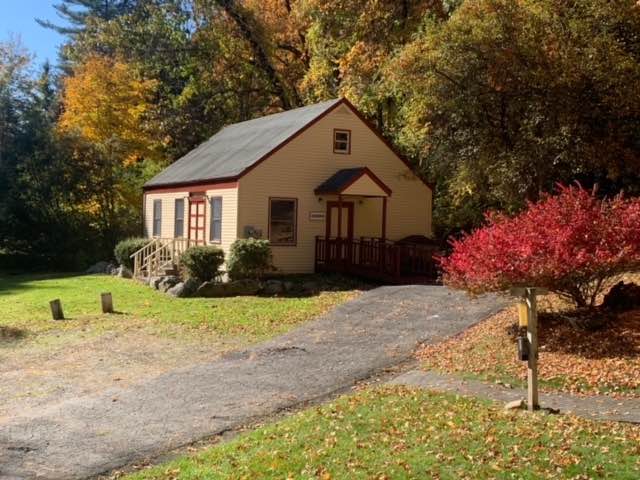 The Capa Space
The Capa Space
The Capa Space is the brainchild of Yorktown resident and artist Elise Graham. She sought to share her mission to use art to inspire change by opening the exhibition space and bringing world class photography to a local setting.
The gallery will host several exhibits each year, along with special events, dramatic performances, films and lectures. It is open to the public and welcomes visitors. Click here to learn more about the space and to plan your visit.
 Soldier Saluting at Farewell Ceremony for the International Brigade Photo by Robert Capa from the Robert and Cornell Capa Archive ICP/Magnum
Soldier Saluting at Farewell Ceremony for the International Brigade Photo by Robert Capa from the Robert and Cornell Capa Archive ICP/Magnum
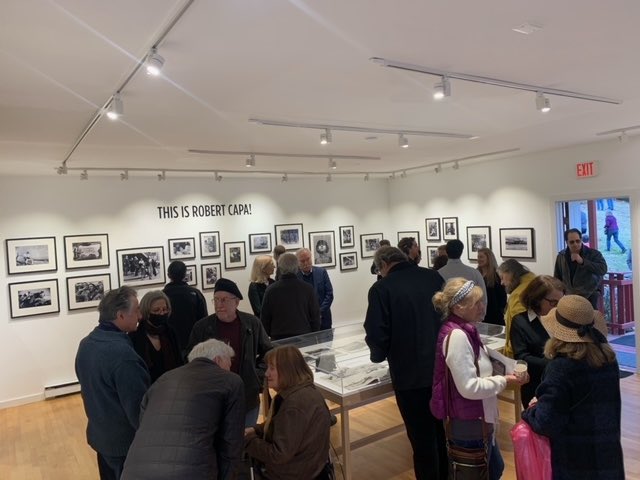 The opening of the Robert Capa show on April 8, 2023.
The opening of the Robert Capa show on April 8, 2023.










